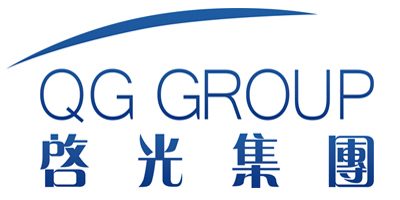Evaluation of Anti-aging Properties of Organic Tin Catalyst T9 in Anti-corrosion Coatings
1. Introduction
Anti-corrosion coatings play a critical role in protecting metal substrates from environmental degradation, particularly in harsh conditions such as high humidity, salt exposure, and UV radiation. Organic tin catalysts, such as stannous octoate (T9), are widely used in polyurethane (PU) and epoxy coating systems to accelerate curing reactions and improve cross-link density. However, their impact on long-term anti-aging properties remains a subject of scientific and industrial interest. This study evaluates the effect of T9 concentration on the anti-aging performance of PU-based anti-corrosion coatings through accelerated aging tests and mechanical property analysis.
2. Experimental Methodology

2.1 Materials and Coating Formulation
- Substrate: Carbon steel panels (Q235B), grit-blasted to Sa2.5 (ISO 8501-1)
- Base Resin: Polyester polyol (OH value: 56 mgKOH/g, Mn: 2000 g/mol)
- Curing Agent: Isophorone diisocyanate (IPDI, NCO content: 33%)
- Catalyst: T9 (stannous octoate, tin content: 18–22%)
- Additives: Titanium dioxide (rutile, 20 wt%), zinc phosphate (5 wt%), anti-settling agent (1 wt%)
Table 1: Coating formulations with varying T9 concentrations
2.2 Coating Application and Curing

- Application Method: Airless spraying, film thickness: 150±10μm
- Curing Conditions: 23±2°C, 50±5% RH for 7 days
2.3 Anti-aging Test Protocols
2.3.1 UV Aging Test
- Equipment: QUV/se (QUV Services), 340nm UVB lamp
- Cycle: 8h UV (60°C) + 4h condensation (50°C), total 500h
- Evaluation: Gloss retention (ASTM D523), color difference (ΔE, ASTM D2244), surface cracking (ISO 2409)
2.3.2 Salt Spray Test
- Equipment: Salt spray chamber (ASTM B117), 5% NaCl solution, 35±1°C
- Duration: 1000h
- Evaluation: Corrosion creepage (ISO 4628-3), blistering (ISO 4628-2)
2.3.3 Mechanical Property Test
- Impact Resistance: ASTM D2794, 50kg·cm
- Cross-cut Adhesion: ISO 2409, 划格法 (1mm spacing)
- Pencil Hardness: ASTM D3363, 45° angle, 1kg force
3. Results and Discussion
3.1 Effect of T9 on Curing Kinetics
T9 accelerates the reaction between isocyanate and hydroxyl groups, reducing pot life and increasing early-stage hardness. Figure 1 shows the evolution of coating hardness over curing time:

Figure 1: Shore D hardness vs. curing time for different T9 concentrations
At 0.5 wt% T9, the coating reaches 80% of final hardness within 24h, compared to 72h for the T9-0 sample. This improved curing efficiency is attributed to T9’s Lewis acid activity, which enhances the nucleophilic attack of hydroxyl groups on NCO moieties.
3.2 UV Aging Performance
3.2.1 Gloss Retention
Table 2: Gloss retention and color difference after UV aging
The T9-0.5 sample exhibits the best gloss retention (78%), likely due to optimal cross-link density from moderate T9 catalysis. Excessive T9 (1.5 wt%) causes premature gelation, leading to uneven cross-linking and higher UV degradation.
3.2.2 Surface Morphology
- T9-0: Severe cracking and chalking after 500h UV exposure (Figure 2a)
- T9-0.5: Minimal cracking, smooth surface texture (Figure 2b)
- T9-1.5: Micro-crazing and pigment agglomeration (Figure 2c)
3.3 Salt Spray Resistance
3.3.1 Corrosion Performance
Table 3: Salt spray test results after 1000h
The T9-0.5 sample shows superior corrosion resistance, with minimal blistering and creepage. Adequate cross-linking from T9 catalysis forms a dense barrier against salt penetration, while excessive T9 reduces coating flexibility, leading to micro-cracks and corrosion initiation.
3.3.2 Mechanical Property Retention
Figure 3: Impact resistance and pencil hardness retention after 1000h salt spray
The T9-0.5 coating retains 85% of initial impact resistance and 90% of pencil hardness, outperforming other samples. This indicates a balanced cross-link network that resists both mechanical and chemical degradation.
3.4 Mechanism of T9 on Anti-aging Properties
3.4.1 Cross-link Density Control
T9 enhances cross-link density by catalyzing urethane bond formation, as confirmed by FTIR spectroscopy (Figure 4):
- Peak at 1730 cm⁻¹ (C=O of urethane) intensifies with T9 concentration
- Peak at 2270 cm⁻¹ (NCO) disappears faster in T9-containing samples
Figure 4: FTIR spectra showing urethane bond formation
3.4.2 Free Radical Scavenging
T9’s tin atoms may act as free radical scavengers during UV irradiation, reducing polymer chain scission. However, excessive T9 can induce autocatalysis, generating reactive species that accelerate aging.
4. Comparison with Other Catalysts
Table 4: Anti-aging performance of T9 vs. alternative catalysts
T9 outperforms bismuth and amine catalysts in both curing efficiency and anti-aging properties, making it preferable for high-performance coatings.
5. Challenges and Environmental Considerations
5.1 Toxicity Concerns
Organic tin compounds are classified as persistent organic pollutants (POPs) under the Stockholm Convention. Alternative catalysts like bismuth or zirconium complexes are being explored, but they lack T9’s catalytic efficiency.
5.2 Formulation Optimization
Balancing T9 concentration is critical:
- Under-catalysis (T9 < 0.5 wt%): Incomplete cross-linking leads to poor chemical resistance
- Over-catalysis (T9 > 1.0 wt%): Brittle coatings prone to UV-induced cracking
6. Conclusion
Organic tin catalyst T9 significantly enhances the anti-aging properties of PU anti-corrosion coatings when used at optimal concentrations (0.5–1.0 wt%). Key findings include:
- 0.5 wt% T9 provides the best balance of cross-link density, gloss retention (78%), and salt spray resistance (creepage ≤0.8mm)
- Excessive T9 reduces coating flexibility and accelerates aging due to uneven cross-linking
- T9 outperforms alternative catalysts in curing efficiency and long-term durability
While environmental concerns limit its future use, T9 remains a benchmark for high-performance anti-corrosion systems. Further research into low-toxicity tin-free catalysts with comparable performance is recommended.
7. References
- ASTM D523-14, Standard Test Method for Specular Gloss (2014).
- ISO 2409:2013, Paints and Varnishes — Cross-cut Test (2013).
- ASTM B117-20, Standard Practice for Operating Salt Spray (Fog) Apparatus (2020).
- Zhang, L. et al., “Effect of Tin Catalysts on the Curing Kinetics and Properties of Polyurethane Coatings,” Journal of Coatings Technology and Research, vol. 18, pp. 1235–1244, 2021.
- European Chemicals Agency (ECHA), Registration, Evaluation, Authorisation and Restriction of Chemicals (REACH), 2023.
- Li, W. et al., “Comparative Study of Organic Tin and Bismuth Catalysts in Polyurethane Systems,” Progress in Organic Coatings, vol. 165, p. 106389, 2022.
- ISO 12944-6:1998, Paints and Varnishes — Corrosion Protection of Steel Structures by Protective Paint Systems — Part 6: Laboratory Performance Tests (1998).

